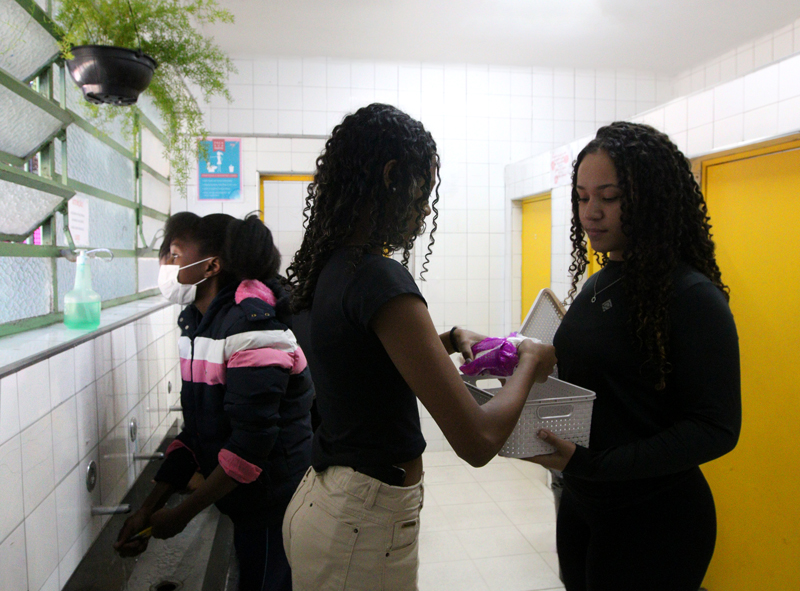
Rovena Rosa / Agência BrasilAt the Espaço de Bitita municipal school in São Paulo, a project addressing period poverty provides free menstrual padsRovena Rosa / Agência Brasil
A report titled “Pobreza menstrual no Brasil: desigualdades e violações de direitos” (Period poverty in Brazil: Inequalities and rights violations), published jointly by the United Nations Population Fund (UNFPA) and the United Nations Children’s Fund (UNICEF), defines period poverty as a phenomenon “experienced by girls and women due to a lack of access to the financial resources, infrastructure, and knowledge required to effectively manage their periods.”
Lack of running water for personal hygiene, inadequate restroom facilities, insufficient privacy for changing menstrual hygiene products, and being unable to afford period supplies or medications for pain relief are all examples of period poverty. Women who experience social and economic vulnerability are also adversely affected by the absence of menstrual and reproductive education and the inadequacy of government programs addressing this critical aspect of women’s health.
In Brazil, only recently has a related federal government initiative come into force — the Menstrual Dignity Protection and Promotion Program. This program provides free disposable menstrual pads to disadvantaged women, including homeless women and inmates, through the National Healthcare System (SUS). The program is set to benefit 4 million girls and women across 3,500 municipalities.
The economic, social, and physiological ramifications of period poverty are manifold and often irreversible. Inadequate intimate hygiene leads to missed workdays and school absences; girls are unable to play with friends and their social life is affected.
A study by the São Paulo-based Instituto Locomotiva, titled “A relação das brasileiras com o período menstrual e o fenômeno da pobreza menstrual” (Brazilian women’s relationship with menstruation and the phenomenon of period poverty), reveals that over 5.5 million working women — or 19% of the total — have missed work due to being unable to afford period supplies. UNICEF data indicate that approximately 321,000 students, accounting for 3% of the total female student population in Brazil, attend schools with inadequate restroom facilities. Of these, 121,000 live in Brazil’s Northeast.
Mônica Maria de Jesus Silva, a professor of nursing at the Ribeirão Preto School of Nursing of the University of São Paulo (EERP-USP) and coordinator of the MenstruAÇÃO project, underscores the educational toll of menstrual poverty with a simple calculation. “If menstruating women miss school whenever they have a period — typically lasting around five days each — they would miss approximately 60 school days per year, amounting to nearly 30% of the total academic year.”
Socks and bread crumb
An estimated 60 million women in Brazil menstruate. According to data from a survey titled “Livre para menstruar” (Free to menstruate), individuals in the bottom 5% income bracket would need to work for up to four years to afford the disposable menstrual pads required throughout their reproductive lifespan — estimated at approximately 11,000 units.
In communities with limited access to menstrual products, it is common for individuals to not change these items as frequently as recommended. Consequently, users may be exposed to allergies and diseases such as candidiasis, recurrent urinary tract infections, and bacterial vaginosis.
“Women unable to afford menstrual pads, menstrual cups, or tampons often resort to makeshift solutions to manage their periods, such as using strips of clothing, socks, bread crusts, or makeshift pouches filled with sand or makeup sponges wrapped in newspaper,” Silva explains. However, menstrual poverty is not confined to Brazil or impoverished nations alone. According to the World Bank, at least 500 million women and girls worldwide lack access to adequate facilities to manage their menstrual hygiene.
Republish